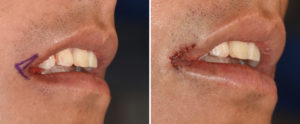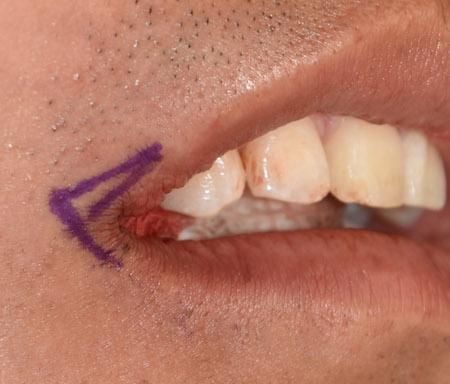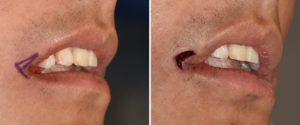The corner of the mouth, despite its small size, plays a major role in the appearance of the perioral region. It affects the expression of the mouth (happy or sad/mad) as well as its size. (horizontal length) Being a bilateral part of the mouth it is also subject to issues of asymmetry as well.
Changing the shape of position of the corner of the mouth can be done by a variety of treatment strategies from non-surgical to surgical. Botox injections to the depressor anguli muscle can help a downturned mouth corner. With the same intent injectable fillers can also help lift up enough corner. But either are permanent effects and must be repeated for a sustained effect.
The one permanent procedure to change the shape of the corner of the mouth is surgical manipulation of the vermilion border. Just like a vermilion advancement on any other part of the upper and lower lips, the vermilion-cutaneous border of the mouth corner can similarly be relocated.
The corner of the mouth has been around for over half a century and was originally described a Valentine lift due to the shape of the skin excision. While effective I have never liked this technique because it creases a scar line that angles out unto the skin away from the mouth corner. It is a scar line that notoriously results in a need for scar revision and can create an unnatural look.


In mouth corner and lower lip asymmetry the pennant corner of the mouth lift procedure provides an effective procedure in which the location of the scar in this unforgiving mouth area is in the most favorable location.
Dr. Barry Eppley
Indianapolis, Indiana




